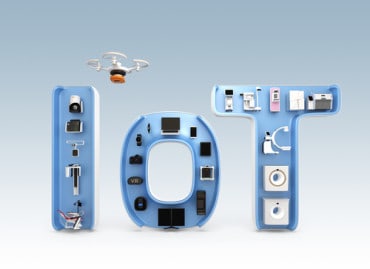
To keep apps driving customer satisfaction and usability, being as unintrusive as possible is key. Augmented location technology can help.
Applications are useful tools to keep a company or brand right in the user’s pocket. But this relationship can be challenging because people are becoming more and more exigent on their apps: from the 3.8 million apps available in the market, they have installed on average 80 apps in their smartphones and only use 9 a day.
Then, keeping this privileged place in the users’ smartphone is as hard as being selected. The apps should be present without being intrusive. Not using push notifications can result in people losing interest or forgetting to use the app as frequently. However, sending too many notifications and messages that are not germane to the user at specific moments in time can create notification fatigue. These so-called “blind apps,” do not recognize the user in a real-time context and sending frequent, irrelevant information will land these apps in the virtual trash can.
Users want apps that offer solutions to a problem, make day-to-day tasks like commuting easier or deliver information relevant to where the user is at that moment. Similar to calling iPhone devices “smart,” users are looking for “smart” applications that save time and turn their experiences from “what happened?” to “what will happen and what should we do next?” Apps should not disrupt people’s lives, but rather, be useful when they need them or are ready to learn something new.
See also: Marketing with IoT — Location and personalization
For years, companies have applied basic location services to determine notification relevance, but this is no longer enough to deliver the rich experience that today’s application users demand. The next step to delivering these experiences is augmented location, which uses machine learning to unite dynamic information and observations to a geographic location within a specific context.
Augmented location will fuel the application experience in three ways: activating the application when it can be useful; identifying the best moments for user engagement; personalizing communications and avoiding spam.
#1: Activating the Application
As networks and phones get more sophisticated and allow more storage, Americans continue to embrace the application craze. But after downloading, the appeal of the latest app loses its luster if the user doesn’t see real value. With augmented location, even if the app is closed, an external event can trigger it to open as the user is at a place that is related to its functionality.
For example, the app might notify the user about transport as they go out the train station. Perhaps there is a problem with their usual subway line, the app can warn about it and, and at the same time, redirect to other services, like ride sharing. These real-time notifications are a great benefit for the user, who doesn’t need to look for the right information to take a decision. To ensure longevity, the app must be increasingly useful and relevant to its audience.
#2: Identifying the Best Moments for User Engagement
Roughly 90 percent of people keep the location services function on their smartphones switched to “on,” according to research by the Pew Research Center. With location data obtained through the app, it is easier to understand the user context and propose what is necessary or desired according to the moment in time and context.
This would include where they live and work, how they commute and for how long each day, when they’re shopping, traveling, doing sports, or attending a show or concert. Real-time information and alerts, for example regarding transport, that are relevant and closely related to the user’s context and decrease frustration. If a user isn’t moving in a particular location and this habit recurs daily, we can predict what comes next will also happen: a 30-minute commute during which the user will use their phone heavily.
That wait time and commute provide ample availability and an ideal moment to update the user with information and services related to their itinerary and/or to direct them to using their device. Noontime, for example, provides an ideal moment to offer someone lunch or gym/exercise options in their area. Application experiences fueled by real-time data about location and behavior provide invaluable context for user engagement.
#3: Personalizing Communication, Less is More
Users respond better to contextualized notifications addressed to them as individuals, in the right moment and with the right content. That increases their satisfaction and sense of control. Augmented location provides the context needed to define new user segments and create targeted notifications with more relevant detail.
Segments might be users who arrive at a specific business area of the city, commute every day for more than 45 minutes, or have dinner in the city at least three days per week. The idea is to send fewer notifications to each segment but more qualitative and useful notifications.
Developers can enhance the mobile app experience with personalized information and notifications, which saves time, inspires discovery and even encourages people to take more useful action. Understanding user context elicits more relevant experience and engagement, which offers opportunities for the application developers and marketers.
Understanding the user’s journey and patterns helps to determine the volume, timing, and type of notifications, and create meaningful moments between the app and the user. In this case, the old adage, “less is more applies.” Fewer but influential notifications improve communication and the overall user experience.
The union of location with dynamic information about timing and user behavior through augmented location transforms mobile apps into essential resources for the user. This human-centric experience ensures continued engagement and competitive advantage for developers and marketers.
When developers focus on user engagement, they can marry user appeal with marketing needs for those critical moments of interaction and ultimately long-term retention. With this, the possibilities abound in such fields as transportation, hobbies, hospitality and social interests. Intelligent location solutions can drive mobile and brand engagement and a create more valuable application experience for consumers.





























